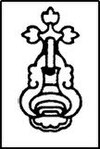Amecameca
| La casa de los Meca | ||
|---|---|---|
| Town & Municipality | ||

Amecameca with the Sierra Nevada in background
|
||
|
||
| Coordinates: 19°07′40″N 98°45′46″W / 19.12778°N 98.76278°W | ||
| Country |
|
|
| State | State of Mexico | |
| Municipal Status | 1824 | |
| Government | ||
| • Municipal President | Carlos Santos Amador | |
| Elevation (of seat) | 2,480 m (8,140 ft) | |
| Population (2010) Municipality | ||
| • Municipality | 48,421 | |
| • Seat | 31,422 | |
| Time zone | CST (UTC-6) | |
| Postal code (of seat) | 56900 | |
| Demonym | Amequense | |
| Website | http://www.amecameca.gob.mx | |
Amecameca (formally Amecameca de Juárez) is a town and municipality located in the eastern panhandle of Mexico State between Mexico City and the Iztaccíhuatl and Popocatépetl volcanos of the Sierra Nevada mountain range. It is located on federal highway 115 which leads to Cuautla, which is called the Volcano Route (Ruta de los Volcanes). This area is popular with weekend visitors from Mexico City, Puebla and Morelos to enjoy the scenery of the mountains, eat local foods, visit the Sanctuary of the Señor del Sacromonte, the Panoaya Hacienda and other attractions. However, when Popocatépetl is active, tourism here drops dramatically. The area receives a large number of visitors during the annual Carnival/Festival del Señor del Sacromonte, which extends over the week containing Ash Wednesday and is considered to be one of the most important festivals in Mexico State.
The name Amecameca comes from Nahuatl. It has been interpreted to mean “place where the papers signal or mark,” or “paper used ceremoniously.” The paper is called amatl, which is a bark paper used to dress images of gods and is still made as a craft. “de Juárez” was added to the name in 1887 by the government of the state of Mexico in honor of Benito Juárez.
Settled human habitation in this area began early mostly in dispersed small villages. The Chichimeca tribe called the Totolimpanecas arrived around 1268 and populated the areas now known as Itztlacozauhcan, Tlayllotlacan Amaquemecan. Later arrivals occupied areas known as Tzacualtitlan Tenanco Amaquemecan and Atlauhtlan Tzacualtitlan Amaquemecan. These groups had their own small dominions. In 1336, another dominion called Tlaylloltlacan Teohuacan was formed. All these communities were collectively known as the Amaquemecans. Religious practices in this area were mostly performed in urban temples and shrines located on mountaintops and caves. In 1465, the Aztecs conquered this area, along with the rest of the Valley of Chalco, replacing local leaders with military governors and transforming the area into a tributary province with neighboring Tlalmanalco as capital.
...
Wikipedia


